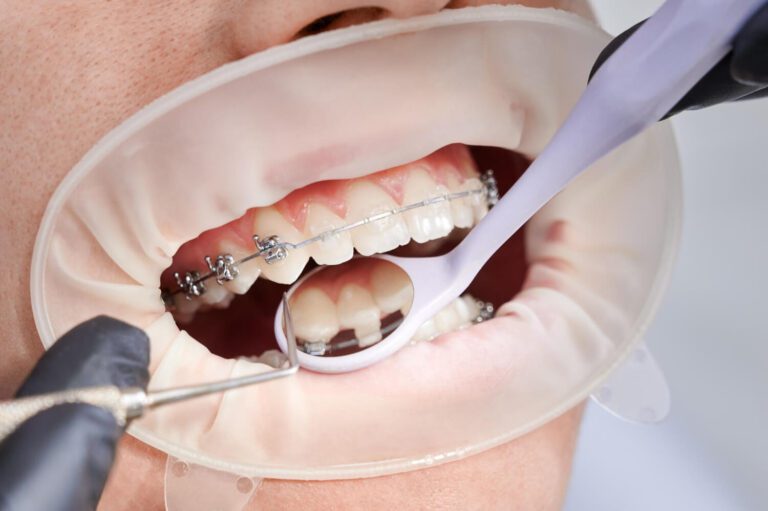Ceramic braces have become a popular choice for those seeking orthodontic treatment. They offer a more discreet alternative to traditional metal braces, allowing individuals to straighten their teeth without drawing too much attention to their smile.
However, many people considering ceramic braces wonder, do ceramic braces stain? In this article, we’ll explore this question, discuss how to prevent staining, and weigh the pros and cons of ceramic braces.
Do Ceramic Braces Stain?
The short answer is yes, ceramic braces can stain, but the extent to which they stain depends on several factors. Ceramic brackets are made from a tooth-colored material that can be more susceptible to discoloration than metal brackets.
Stains can occur from consuming certain foods and beverages, poor oral hygiene, and even smoking.
Common causes of staining
- Food and Drink: Items like coffee, tea, red wine, and certain sauces can lead to staining. The ligatures (the small rubber bands that hold the archwire in place) can also pick up colors from these foods and drinks.
- Smoking: Tobacco products can cause yellowing and discoloration of ceramic braces over time.
- Poor Oral Hygiene: Neglecting to brush and floss regularly can lead to plaque buildup, which can also contribute to staining.
How to Prevent Ceramic Braces from Staining
Fortunately, there are several steps you can take to minimize the risk of staining your ceramic braces:
1. Maintain good oral hygiene
Keeping your teeth and braces clean is essential. Brush your teeth after every meal and floss daily. Consider using an interdental brush to clean between the brackets more effectively.
2. Be mindful of your diet
Limit your consumption of foods and drinks known to stain teeth and braces. If you indulge, try to rinse your mouth with water afterward to wash away any residues.
3. Use whitening products carefully
While many people want to maintain a bright smile, be cautious with whitening products. Some whitening toothpaste can be abrasive and may wear down the ceramic material.
4. Regular dental visits
Frequent check-ups with your orthodontist can help you monitor the condition of your braces and address any staining issues early. Professional cleanings can also remove any buildup that may lead to discoloration.
5. Choose clear ligatures
If staining is a concern, ask your orthodontist about using clear or white ligatures instead of colored ones. While they may still stain, they are less likely to show discoloration compared to colored ligatures.
Pros and Cons of Ceramic Braces
Ceramic braces have several advantages and disadvantages to consider before making a decision:
Pros
- Aesthetic Appeal: Ceramic braces blend in with the natural color of your teeth, making them less noticeable than metal braces.
- Effective Treatment: They function similarly to metal braces and can effectively correct a variety of orthodontic issues.
- Comfort: Many people find ceramic braces more comfortable than metal ones, as they typically have smoother edges.
Cons
- Staining Potential: As discussed, ceramic braces can stain over time, which may require extra care to maintain their appearance.
- Durability: Ceramic brackets can be more fragile than metal brackets, which may lead to breakage if you’re not careful.
- Cost: Ceramic braces are often more expensive than traditional metal braces, which can be a consideration for some patients.
Final Thoughts on Ceramic Braces
In summary, while ceramic braces can stain, following proper oral hygiene practices and being mindful of your diet can help minimize this risk. Understanding the pros and cons of ceramic braces will enable you to make an informed decision about your orthodontic treatment.
If you’re considering ceramic braces, it’s a great idea to consult with an orthodontist at Mundo Dentistry, who can guide you through the process and help you achieve the smile you desire.
By being proactive in your care, you can enjoy the benefits of ceramic braces while keeping them looking their best. Happy smiling!
Get the confidence you deserve!
Start your ceramic braces journey!


